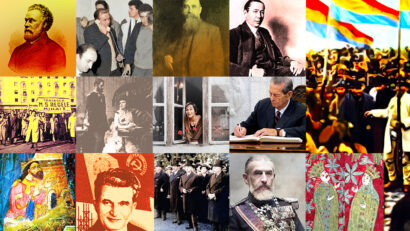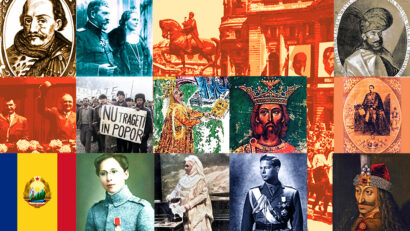Planned Economy and Banks
A look at the banking system in Romania after the Second World War

Steliu Lambru, 25.05.2015, 14:32
The centrally planned economy system was one of the pillars of the communist regime. After the first communist government came to power in Romania, on March 6th 1945, the Romanian Communist Party started the implementation of this system. In transforming the economy, the communists relied on the governmental agencies it had seized with the help of the Soviet Army, on its own members, on ideological propaganda, on pressure and persuasion.
The shift from a free market economy to a centrally planned one took several years to achieve, but it had well defined goals and it reached its targets. It involved nationalisation and property seizing, and banks were among the main assets to become state-owned. Viewed as one of the symbols of capitalism, banks were stripped of assets, of the right to give loans and to set interest rates, of deposits and other receivables.
Law no. 119 of June 11, 1948 nationalised industrial companies, banks, insurance companies, mining firms and transport operators, which all became state property. The law included virtually all profit-making means of production. In a 1996 interview to Radio Romanias Oral History Centre, Mihail Magherescu, a member of the Liberal Youth and chief of staff for Finance Minister Mihail Romniceanu, recalled the moments that followed the nationalisation:
Mihail Magherescu: “All the employees of other banks were taken over by the National Bank, which became a state-owned bank and which remained the only one that carried out all banking operations: loans, repayments, anything. It was the only bank left, and this is when the centralised system began. It started with the banking sector, because this was the sector that controlled all economic and financial operations. So dismantling the private banking sector and concentrating all operations in a centralised bank was the beginning of the centralised economic system.”
The nationalisation of the banking system prompted the collapse of the free market economy and of the loan system, of the circulation of money, which is the driving force of any healthy economy. Mihail Magherescu remembers the working conditions for a bank employee in those times:
Mihail Magherescu: “I was new with the bank and I had the smallest salary, around 45 million lei, when a loaf of bread cost between 200 thousand and 400 thousand, maybe even more. In order to destroy or seize all the production means that were in the hands of the middle class or the bourgeoisie, the government launched a monetary reform. But it was not a reform in the true sense of the word, it only seized all money without giving anything in return. Those who had a job were privileged, so to say, because they received a salary, no matter how small. I remember in 1947 I got 30 lei, but you could buy things with this money. The others, who were not employed, didnt get anything. And this was the hardest blow dealt to the bourgeoisie, the fact that their money was taken away. One year later, the government nationalised all private enterprises, and that was the second blow. A second monetary reform followed, in 1952, but the exchange rate was not 1 to 1, but 1 to 20, and the government did not exchange all the amounts the deposit owners had, but set a ceiling instead. So these were the methods used by the Communist Party to get rid of the bourgeoisie and to absorb all the money circulating in the country.”
The Soviet advisers were a critical element in the new type of economy that the communist power in Bucharest was implementing. Mihail Magherescu:
Mihail Magherescu: “At the National Bank, I saw some of these advisers myself, when we were taken over from Banca Romaneasca. Because I was very young and single, I was sent to the Ploiesti branch, but I only stayed there for two years, then I got back to the head office. This happened in 1949-1950. There was this Soviet adviser, his name was Romashov, I remember it clearly. His clothes were all messy and unkempt, as far as I remember. He brought instructions from GostBank in Moscow, and we had to change all our operations to fit the GostBank model.”
But, Mihail Magherescu says, the regime also used the old professionals in reaching its objectives:
Mihail Magherescu: “All those who coordinated this well-planned process were the old-generation professionals. If you were clean, as they said, you had not had any properties or companies, if you were a good employee, they let you work. And during the 8 or 9 years that it took to make this change, the communists worked with these people. I know the situation at the National Bank in more detail, because I worked there until retirement. All the former managers, who were around 45 to 50 years old at the time were gradually replaced with old-time party activists and even workers who had no training in the field, but relied a lot on the old experts, who were kept in the bank in non-management positions.”
After nationalisation, the Romanian banks were integrated in a type of economy that had not been tested in any developed country. Planned economy seemed, in theory, better than the free market one, but time proved the opposite.






























